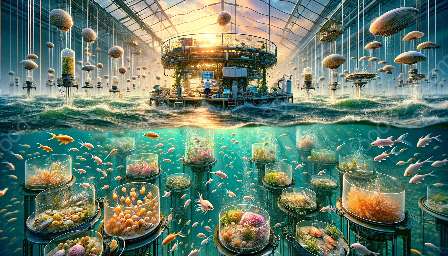When it comes to shellfish, there is a complex and intriguing process from harvesting to post-harvest handling, all of which significantly impact the quality and safety of the final product. In this comprehensive guide, we will delve into the world of shellfish biology, aquaculture, and seafood science, and explore the various aspects of shellfish harvesting and post-harvest handling.
Understanding Shellfish Biology
Shellfish, encompassing a wide variety of species such as oysters, clams, mussels, and scallops, are vital components of aquatic ecosystems. These fascinating creatures exhibit unique biological characteristics, including filter-feeding capabilities and the ability to adapt to diverse environmental conditions.
Shellfish play an essential role in maintaining water quality and ecological balance in their natural habitats.
Shellfish Aquaculture
Shellfish aquaculture involves the cultivation of shellfish in controlled environments, typically in estuaries or nearshore areas. This method of farming not only contributes to the production of high-quality shellfish but also supports the sustainability of marine resources.
Advancements in shellfish aquaculture techniques, such as hatchery-based seed production and integrated multi-trophic aquaculture, have revolutionized the industry, making it more efficient and environmentally friendly.
Key Aspects of Seafood Science
Seafood science encompasses a wide array of disciplines including food safety, sensory analysis, and nutritional profiling. When it comes to shellfish, understanding the relationship between harvesting, handling, and the resulting quality of the product is critical.
Developments in seafood science have led to improved methods for evaluating shellfish quality, shelf-life extension, and the development of innovative processing techniques.
The Art of Shellfish Harvesting
Shellfish harvesting involves carefully extracting these delicate creatures from their natural environments while minimizing the impact on their ecosystems. Harvesting methods vary depending on the species and location but may include hand-gathering, dredging, or the implementation of sophisticated aquaculture techniques.
Harvesting seasonality, regulatory compliance, and environmental sustainability are key considerations in the art of shellfish harvesting.
Post-Harvest Handling Techniques
Upon harvesting, shellfish require immediate and proper handling to maintain their quality and safety. Cooling, washing, grading, and packaging are crucial steps in the post-harvest process.
Implementing effective post-harvest handling techniques is essential for preserving the flavor, texture, and nutritional content of shellfish.
Quality Control and Safety Measures
Ensuring the quality and safety of shellfish products involves rigorous quality control measures and adherence to food safety standards. From monitoring temperature during transport to implementing stringent hygiene protocols, every aspect of post-harvest handling contributes to the overall quality of the final product.
Furthermore, rapid technological advancements have enabled the industry to employ traceability systems and real-time monitoring to enhance safety and transparency throughout the supply chain.
Impacts of Shellfish Harvesting and Handling
The practices of shellfish harvesting and post-harvest handling have profound implications for both the industry and the environment. Sustainable harvesting methods, efficient handling processes, and responsible aquaculture practices are essential for the long-term viability of shellfish resources.
Future Innovations and Sustainability
Looking ahead, the integration of cutting-edge technologies, such as bioremediation and precision aquaculture, holds promise for further enhancing the sustainability and productivity of shellfish harvesting and handling.
As the demand for high-quality shellfish continues to grow, the industry is compelled to innovate and adapt, ensuring the harmonious coexistence of shellfish aquaculture with natural ecosystems.
Conclusion
In conclusion, the world of shellfish harvesting and post-harvest handling is a complex amalgamation of biology, aquaculture, and seafood science. By understanding the intricacies of shellfish biology, embracing sustainable aquaculture practices, and leveraging advancements in seafood science, the industry can continue to provide safe, nutritious, and delectable shellfish to consumers worldwide.

